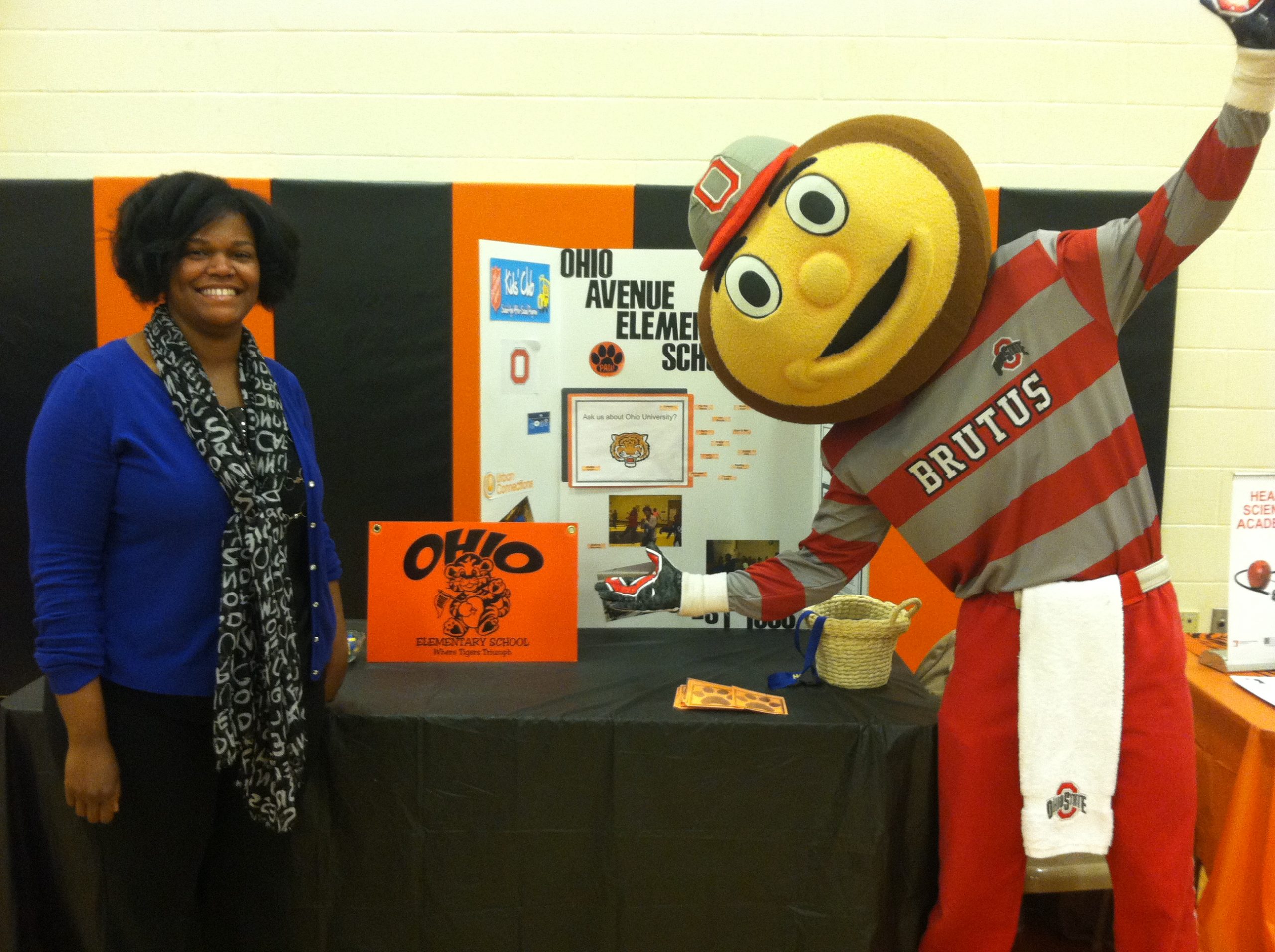By Melanie Lasoff Levs
Columbus, Ohio — From the windows of the Ohio State University Hospital East, one can see East High School, which — with a capacity of 1,200 students — resides in the transitioning community of the Near East Side of Columbus. But currently, fewer than 500 students attend the high school, one of the lowest performing in the district, according to Tei Street, education director of Partners Achieving Community Transformation (PACT), a Purpose Built Communities network member overseeing the revitalization of the Near East Side.
Starting this fall, however, both performance and enrollment — at East High, as well as its feeder middle school and five feeder elementary schools — should start rising, thanks to an initiative to overhaul and align their curriculums, and transform all seven into connected Health Sciences Academies.
These unique, interconnected network of feeder schools will go further than simply offering after-school activities and mentoring, Street says, adding, “We wanted it to be more holistic.”
The concept — the brainchild of former Ohio State University Hospital East CEO Steven Gabbe — is three-fold, Street explains: to provide students with similar curricular frameworks; to offer students real-world experiences by partnering them with staff at the hospitals and another nearby clinic; and to support students and their families with “non-academic barriers” such as poverty and health issues, by engaging them in the community. The recommendations of the PACT education subcommittee included connecting the curriculums of the schools in the community to University Hospital East. Dr. Gabbe took that recommendation beyond a few classes, or a shadowing opportunity into a full blown thematic approach.
After considering pursuing a charter school model for the academies, PACT decided to approach the Columbus City Schools district itself to partner in the endeavor, Street says, adding that the district already had invested $120 million to renovate all seven schools. “These are great buildings — let’s see if we can take advantage of and leverage this investment already made in the schools,” she says was the philosophy.
After about a year and a half of work, PACT and the school district created a Memorandum of Understanding regarding the implementation of the Health Sciences Academies. This document covers all aspects of the schools, from who will maintain the buildings, who will be in charge of different issues and how the two entities will resolve conflicts.
Purpose Built Communities played an active role working with PACT and the school district to craft the MOU. “Purpose Built Communities’ expertise and experience were critical in helping us create an agreement with Columbus City Schools that will help drive the entire neighborhood revitalization effort forward. This approach was new for all of us and we are confident that we are on the right path,” said Trudy Bartley, Executive Director of PACT.
As PACT and the city school district are partnering for this endeavor, so are each of the schools — and the larger community, says Maria Stockard, chief of staff for the superintendent for Columbus city schools. “Right now, we have schools in the same feeder pattern operating independently and in isolation,” says Stockard, who has led the school district team working with Street and Trudy Bartley, executive director of PACT. When the Health Sciences Academies model is in place, she adds, “there will be a cluster of schools intertwined with a common mission and vision.”
That common mission — to serve and lift the children and the surrounding neighborhood — will extend outside the school buildings, Stockard says, with the location of health clinics, after-school activities and adult education into HSA buildings with the space for them. “The child is the center, but how do we bring the community into our schools so we’re connecting all the pieces and resources?” she says. “The schools become the community hubs and resource centers.”
Currently, the 34-member curriculum committee — made up of all seven principals, as well as other school representatives — is preparing for this fall, where students in pre-kindergarten, kindergarten, and grades 1, 5, 6, 9 and 10 will begin using the new curriculum. The 2016-2017 school year will phase in grades 2, 4, 7 and 11, with the rest of the grades beginning the program the following year, according to Street.
The school district also is conducting a principal search for one of the schools, and contacting each staff members at every school to ensure buy-in for what will be rigorous program, says Stockard. “Everyone needs to understand what the commitment is they’re making,” she says, citing a longer school day for teachers, extensive professional development and more community involvement. “We want to make sure teachers and administrators have the opportunity to say, `Yes, I make that commitment.’”
What does a Health Sciences curriculum look like across grades? Street explains that early grades “give kids some basic exposure” to issues such as personal hygiene and doctor visits, while older students will dig deeper into science aspects. In middle and high school, students will engage in more exploratory experiments and hands-on learning with experts from the medical center, she says. “Science is the weakest part of these schools. Parents and students have said there is too much book [reliance] and not enough exploratory science,” Street explains, adding that students also will have opportunities for job shadowing, running labs and enrolling in biomedical courses at Ohio State University.
Enrollment in Health Sciences Academies does not mean all students must choose medical professions, Street stresses. Though health sciences is a trending area in education and in workforce development, “that’s not our goal,” she explains. “What we really want is to make sure they get a high quality education, and when they graduate, they are ready for college, work, to become entrepreneurs or to enter the military, and are ready for the world.”



